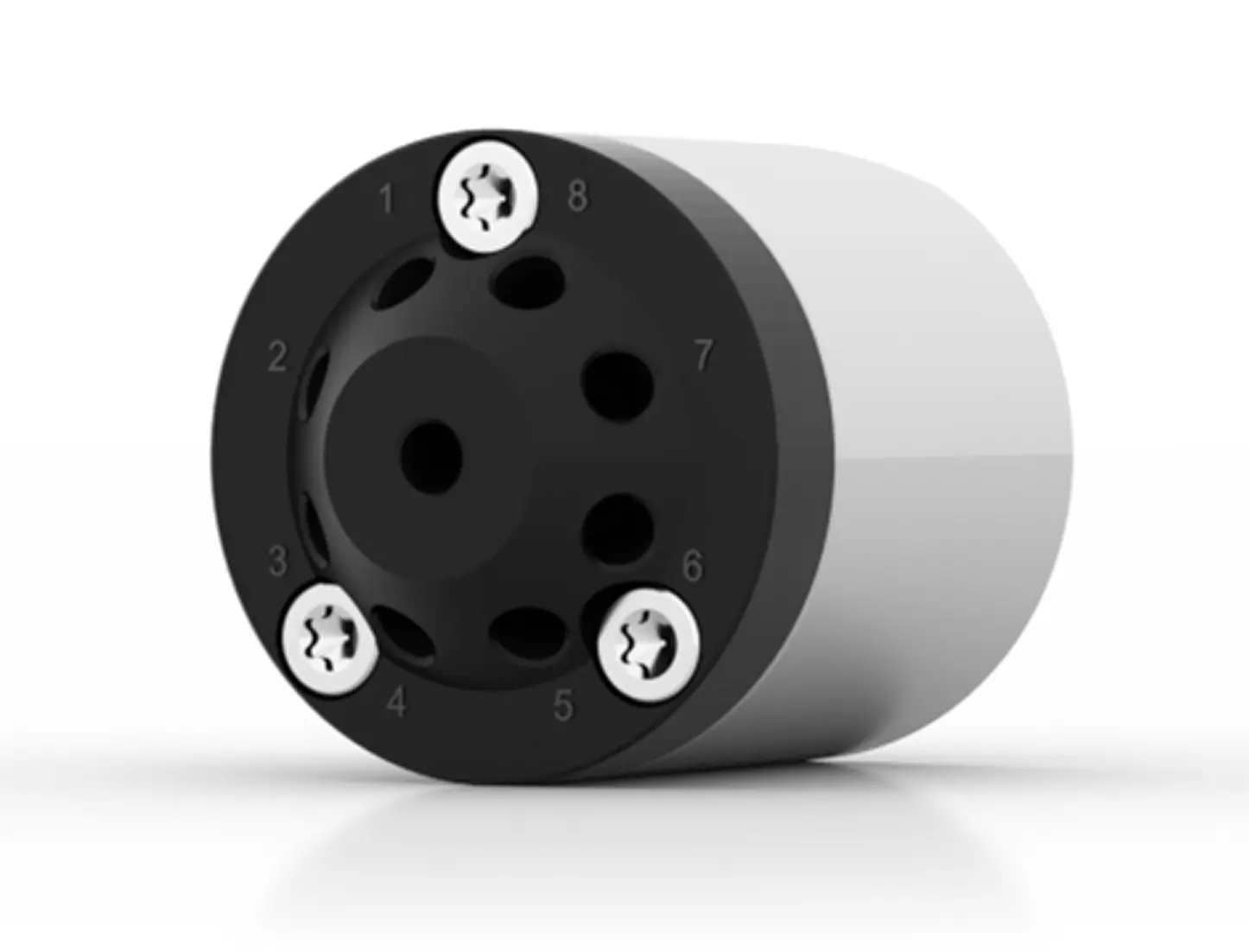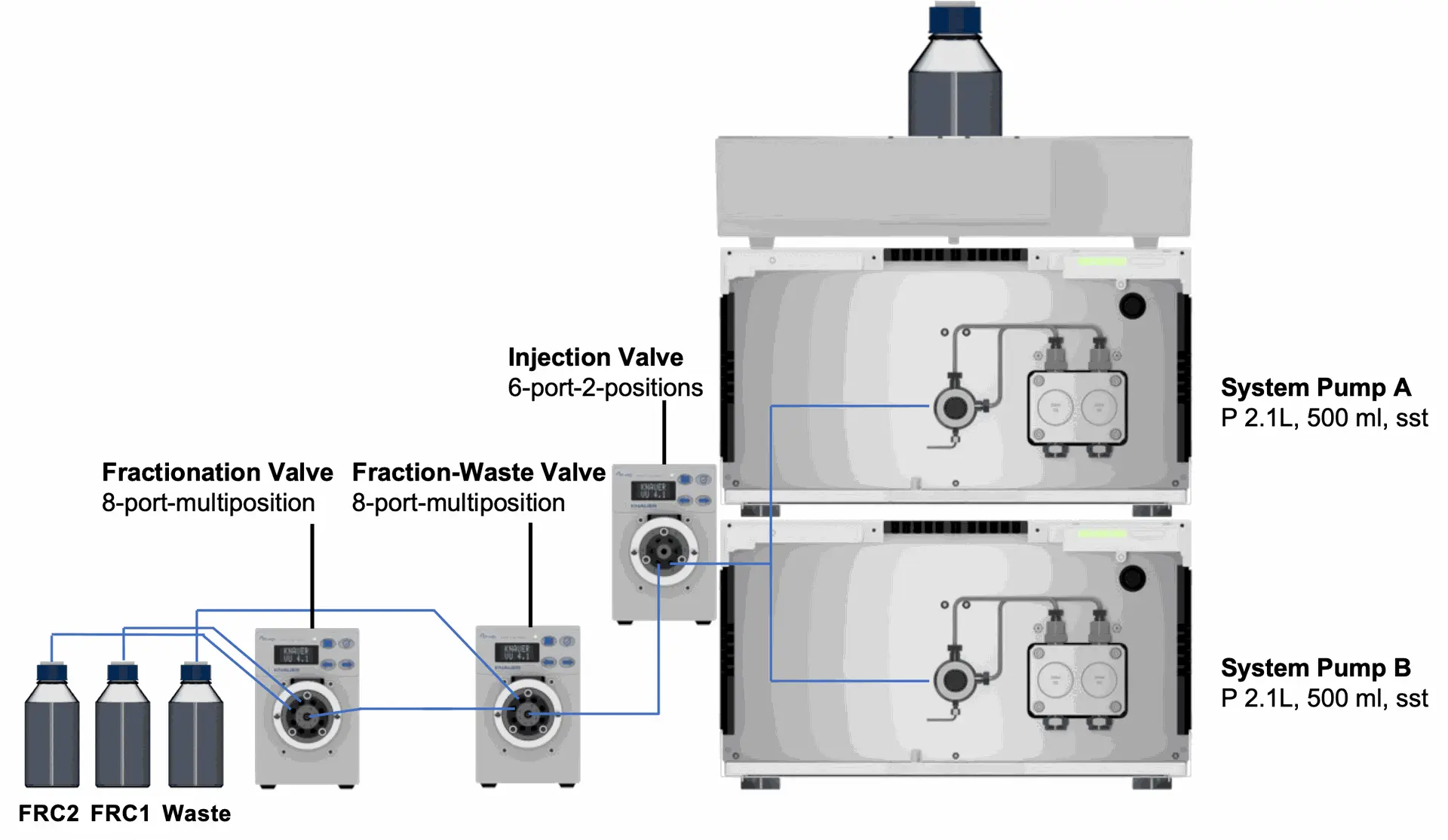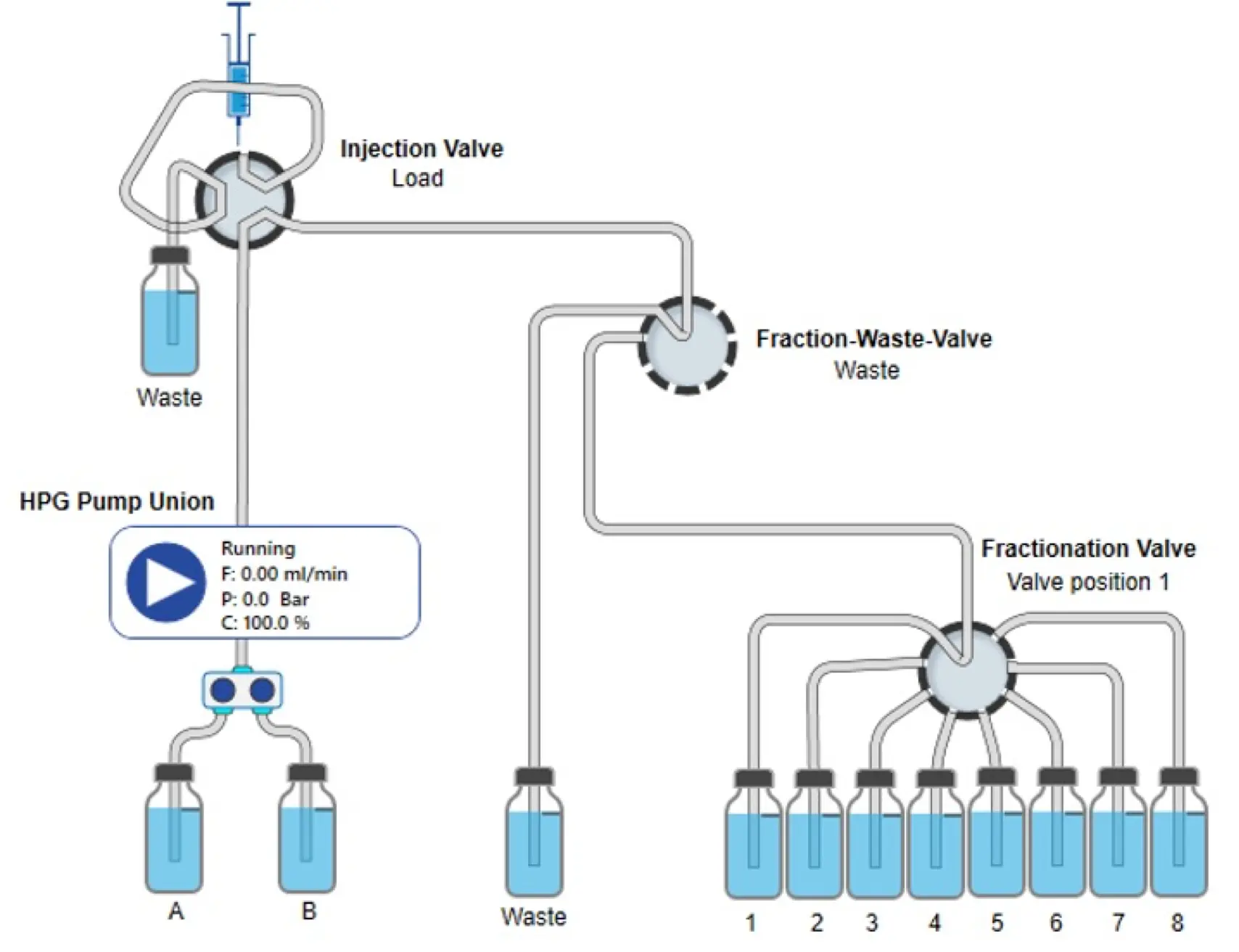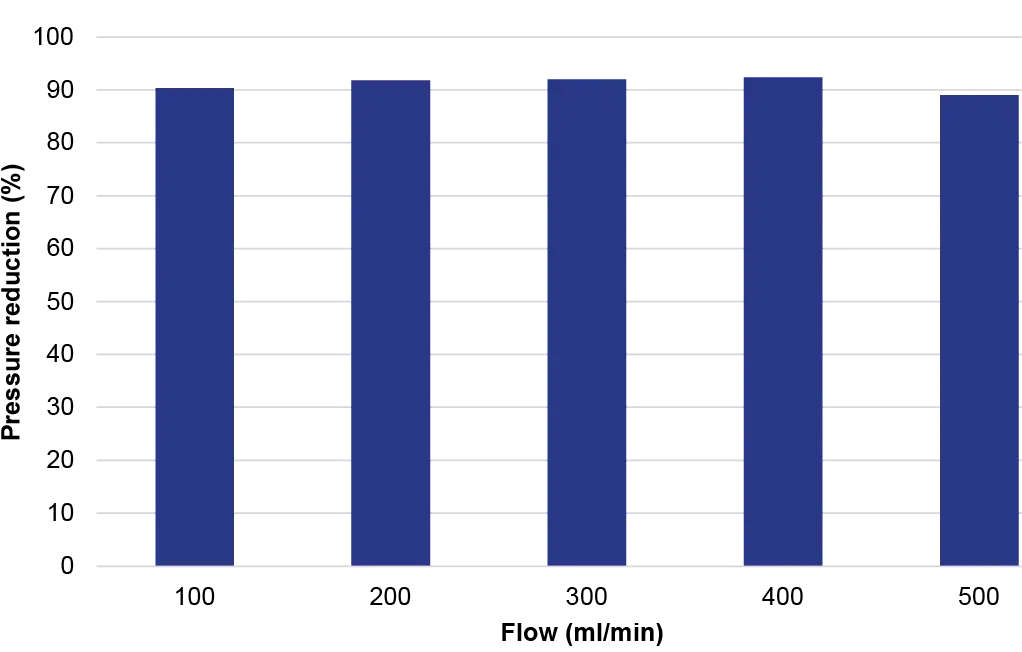Science with Passion
Application No.: VTN0031 Version 1 09/2023
The break-free valve – fractionation with low pressure spikes at high flow rates
J. Wesolowski, Y. Krauke, G. Greco; krauke@knauer.net
KNAUER Wissenschaftliche Geräte GmbH, Hegauer Weg 38, 14163 Berlin

3D Rendering: KNAUER
Summary
Back pressure built up by a fractionation valve during switching can be a challenge, especially while working with pressure sensitive columns. Here, the performance between a standard multiposition valve and the break-free multiposition valve as fractionation valves was compared. The break-free multiposition valve was able to reduce the back pressure at flow rates up to 500 ml/min by approx. 90 %. Especially at high flow rates the break-free multiposition valve proved to be the better fractionation valve. Reducing the back pressure prevents possible damage to the column bed and other pressure sensitive system components. Therefore, it is highly recommended to use the break-free multiposition valve as a fractionation valve in preparative applications.
Introduction
The general goal of preparative chromatography is to isolate, purify and collect one or more target compounds from a solution. Depending on the desired application, the requirements for a preparative system differ in terms of eluent supply, sample injection, column, detection, and fractionation. For fractionation, different valves and/or fraction collectors are available for various flow rates. The back pressure created during switching of multiposition fractionation valves can be a challenge, above of all when using pressure-sensitive columns or system components with low maximum pressure. Therefore, a new stainless steel break-free valve was developed, which allows switching with nearly no back pressure peaks.
Results
To compare the standard and break-free valves at high flow rates, two AZURA®
P 2.1L isocratic pumps were installed, each with a 500 ml stainless steel pump head. Furthermore, valves were installed to enable fractionation (Fig. 1).

Fig. 1 Set-up for preparative system, the valve heads of the fractionation valve were exchanged for testing using the standard and break-free 8 port multiposition valve.
The visualization of the set-up for the preparative system shows the modifications by implementing two 8-port multiposition valves (Fig. 2).

Fig. 2 PurityChrom® 6 visualization of set-up for preparative system.
The 6-port 2-position valve is used for injection where position 1 loads the sample and position 2 injects it to the column. In the presented experiments, no sample was injected therefore the injection valve was constantly on position 2. For fractionation, two 8-port multiposition valves were connected one after another.
The fraction-waste valve switches between waste and fractionation position. The placement of the waste outlet at this position and not together in the fractionation valve prevents contamination of the fractions during the collection process, when switching between waste and fractions. The fractionation valve allows the collection of up to eight fractions.
Switching from one position i.e. Pos.1 over several positions to i.e. Pos.5 is not recommended as this leads inevitably to contamination of the fraction vials in between.
The back pressure during position switching at the fractionation valve was monitored and evaluated at different flow rates from 100 to 800 ml/min using the standard and break-free valve.

Fig. 3 Pressure reduction at different flow rates with the break-free valve cared to the standard valve.
The use of the break-free valve results in an extremely high reduction of the back pressure. The back pressure was reduced by approx. 90 % at flow rates from 100 to 500 ml/min. At flow rates from 600 ml/min the switching of the standard valve led to pump stop as the maximum pressure of 100 bar of the pumps was exceeded. Fractionation at 600 ml/min, 700 ml/min and 800 ml/ min was still possible with the break-free valve without reaching the maximum pressure of the pumps.
Conclusion
At flow rates from 100 to 500 ml/min, the break-free valve was able to reduce the back pressure generated during valve switching by approx. 90 % compared to the standard multiposition valve. At flow rates higher than 600 ml/min and up to 800 ml/min only the break-free could be used. The standard valve led at these flow rates to maximum pressure of the pumps.
The break-free valve showed the highest effect on back pressure reduction at high flow rates. For most applications in preparative chromatography, the use of the break-free valve as fractionation valve is highly recommended, in particular, when pressure sensitive columns are used, or high flow rates are required.
Further, the connection of two multiposition valves as fractionation unit is also highly recommended to avoid possible contamination of fractions by the waste stream during switching.
Material and Methods
Tab. 1 Instrument – Preparative system
Instrument | Description | Article No. |
Pump A | AZURA P 2.1L, 500 ml, sst | |
Pump B | AZURA P 2.1L, 500 ml, sst | |
Injection valve | Valve drive for valves | |
Fraction-Waste-Valve | Valve drive for valves | |
Fractionation Valve | Valve drive for valves Multiposition valve with 8 ports | |
Capillaries | ID Ø 2 mm with 1/8" connections | |
Software | PurityChrom® 6 Full License |
Tab. 2 Method – Preparative system
Parameter | Value |
Flowrate | 100/200/300/400/500/600/700/800 ml/min |
Temperature | Ambient |
Mob. Phase | EtOH/H2O (50/50) |
Isocratic | EtOH/H2O (50/50) |
Application details
Method | Preparative HPLC |
Mode | Other |
Version | Application No.: VTN0031 | Version 1 09/2023 | ©KNAUER Wissenschaftliche Geräte GmbH |



